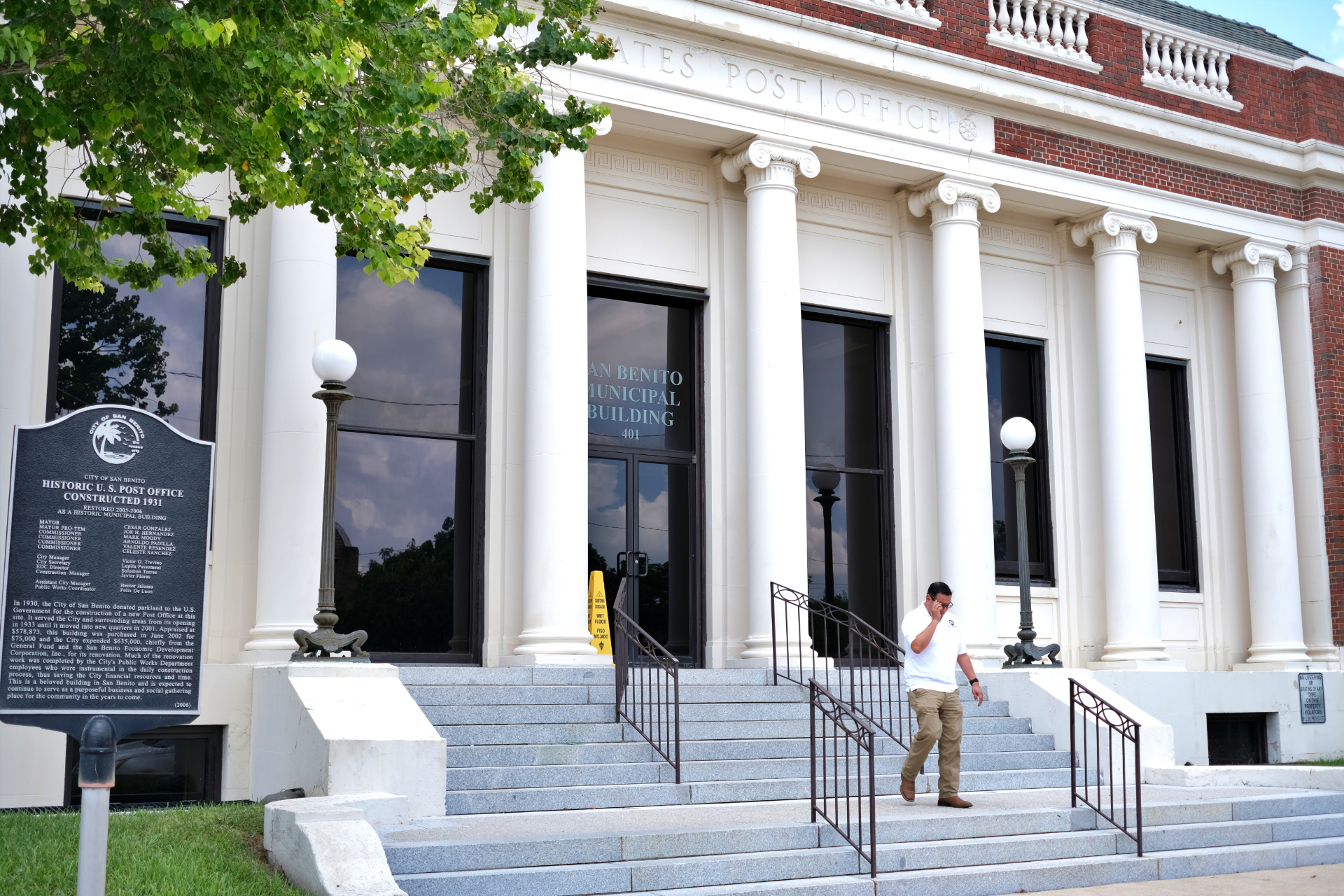 Timothy Gonchoroff (Courtesy photo)
Timothy Gonchoroff (Courtesy photo)Timothy Gonchoroff looks at the environment and sees a positive aspect of an unwelcome species — the Arundo donax. Also know as Carrizo or Giant Cane or Giant Reed, it can be found along the Rio Grande and onward, including irrigation ditches, streams, marshes, sand bars, and levees. Uncontrolled, Arundo donax is seen as a harmful weed.
This installation reexamines its role and potential, offering a perspective that blends both functional and conceptual artistic interpretations.
Regarded as an invasive species, Arundo donax is locally seen as negatively impacting the environment by crowding out native plants and reducing biodiversity, including some populations of wildlife. It can make the Rio Grande less navigable for those who need it, increase erosion, and impact the availability of groundwater and irrigation water. It seems to be a villain.
In this installation, tall Arundo reeds are lined up against the gallery walls as if avoiding what appears as the result of an execution in the center of the gallery where cut stalks have been glued together and cut for functional uses. Gonchoroff suggests this domestic use for the plant as an offset to its aggressive nature.
 ‘Arundo donax’ installation view by Timothy Gonchoroff
‘Arundo donax’ installation view by Timothy GonchoroffArundo donax, found parts
(Courtesy: Nancy Moyer)
Bunched in vertical clusters and cut to a height of around 20”, the reeds provide strong support as seen by the multiplicity of their repetitive horizontal cross-sections. The cross-sectional patterns may also suggest other decorative or functional uses for this technique. Displayed in two groupings, these constructions could function as small tables or for casual seating. Visitors are encouraged to try them out.
The technical roughness about the exhibit may be best understood when viewed as Deconstructed art, a practice that breaks down fixed identities and structures to create a more open self. For example, we are shown the structure of the functional pieces in complete honesty rather than covered with sophisticated finishing materials. The standing reeds are not supported by uniformly cast or constructed bases, but instead display the artist’s utilization of repurposed materials that fit into the concept of an invasive species randomly taking whatever it needs to survive — or stand upon.
The tall reeds that are lined up against the gallery walls provoke further thought; as an invasive species, why do they seem so orderly and almost obedient? Are they just references for the functional pieces? They have been defeated. A video image viciously projects their once wild existence against a screen of the now domesticated reed.
Arundo was first brought to this country to provide building materials. It has ruthlessly colonized the waterways of the southern U.S., driving out the native plants in its march to botanical dominance. As much as a hundred thousand acres of the Rio Grande Basin are infested with it. It forms a grassy forest, within which visibility is roughly 12 to 24 inches, and makes an excellent hiding place for people crossing from Mexico. Customs and Border Protection have spent millions to destroy it. So why not take a constructive view and utilize it for a useful purpose?
Plan on attending the exhibition reception from 1 to 4 p.m. Nov. 14, and meet with Gonchoroff, UTRGV assistant art professor, for further information.
‘Timothy Gonchoroff: Arundo Domestic’
WHERE: STC Art Gallery, Pecan Campus Bldg. B-103
WHEN: Through Nov. 15
HOURS: 8 a.m. to 3 p.m. Tuesdays, Wednesday, Thursday; reception from 1 to 4 p.m. Nov. 14
CONTACT: artgallery@southtexascollege.edu
 ‘Donax Bench’ by Timothy Gonchoroff
‘Donax Bench’ by Timothy GonchoroffArundo donax, glue
16″ x 24″ x 22″
(Courtesy: Nancy Moyer)
 ‘Donax Stools’ by Timothy Gonchoroff
‘Donax Stools’ by Timothy GonchoroffArundo donax, glue
16″ x 16″ x 22″
(Courtesy: Nancy Moyer)
 ‘Donax Stool’ by Timothy Gonchoroff
‘Donax Stool’ by Timothy GonchoroffArundo donax, glue
16″ x 16″ x 22″
(Courtesy: Nancy Moyer)
 multi media image by Tim Gonchoroff
multi media image by Tim GonchoroffArundo donax and video image
(Courtesy: Nancy Moyer)
 ‘Arundo donax’ installation view by Timothy Gonchoroff
‘Arundo donax’ installation view by Timothy GonchoroffArundo donax, found parts
(Courtesy: Nancy Moyer)
Nancy Moyer, Professor Emerita, is an art critic for The Monitor. She may be reached at nmoyer@rg.rr.com.
The post Defeating the invasion: Installation projects a utilitarian purpose for invasive river reed from Middle East appeared first on MyRGV.com.
 (2).png)
 3 days ago
31
3 days ago
31








 English (US)
English (US)